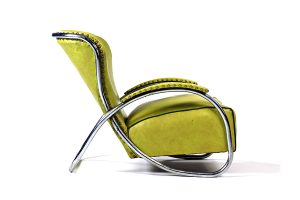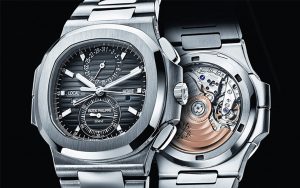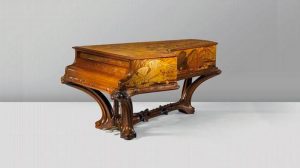Wilhelm Wagenfeld, a design legend – a review of the life and work of this influential designer
The life of Wilhelm Wagenfeld
Wilhelm Wagenfeld was born in the northern German city of Bremen in 1900, on the 15th April and passed away at the age of 90 on the 28th of May 1990, in Stuttgart
Early life
As a young boy Wagenfeld studied drawing at the Bremen Boys School before starting his adult life as an apprentice in the silverware factory belonging to Koch & Bergfeld. This very well respected factory, which produces cutlery, was founded in 1829 and is still in business today.
Wilhelm stayed with the Koch & Berfeld until 1918 and attended the academy of art in the town of Hanau, famous as the birth place of the Brothers Grimm.
In 1923 Wagenfeld went to the Bauhaus in Weimar. Wagenfeld joined Bauhaus as a silversmith. Whilst he was there he designed the beautiful and simple WG24 ‘Bauhaus’ lamp in collaboration with K.J. Juncker. Made from glass and nickel plate steel tube, including a glass base, the product is still manufactured today by the original manufacturer, TECNOLUMEN, from Germany.
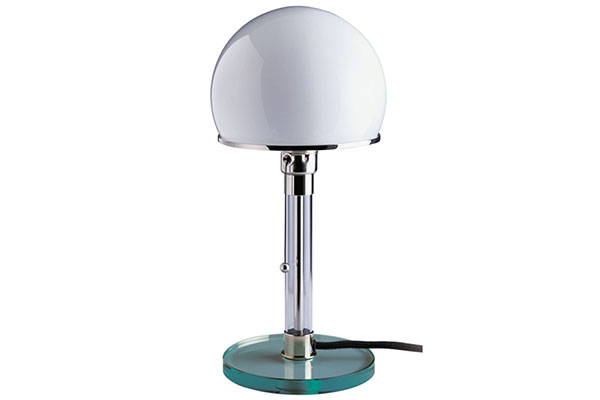
The WA24 Table Lamp designed by Wilhelm Wagenfeld in 1924, produced by Tecnolumen, Germany.
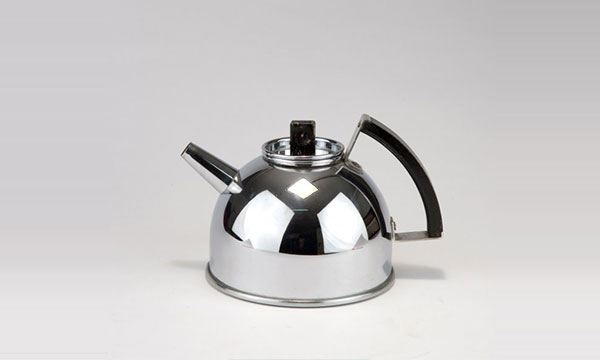
Wilhelm Wagenfeld. Teapot, 1929/30. H. 14.3 cm. Made by Tecnolumen, Bremen. Chrome-plated metal, wood, painted black.
Wilhelm designed two silver teapots in 1924, a so called “Moka machine” and other tableware. Contrary to the large majority of former Bauhaus students, Wilhelm Wagenfeld became a well and widely known industrial designer.
The Bauhaus philosophy
Wagenfeld remained throughout his career loyal to the Bauhaus principles of “less is more” and he designed items to perform their function as efficiently and as simply as possible. Wagenfeld, in his own words, wanted to produce ‘top quality items, that were cheap enough for the poor and good enough for the rich.’
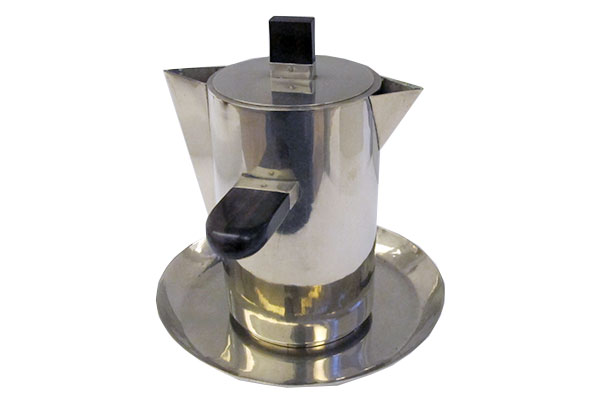
Wilhelm wagenfeld, fett-mager-sauciere (MT 50), 1924
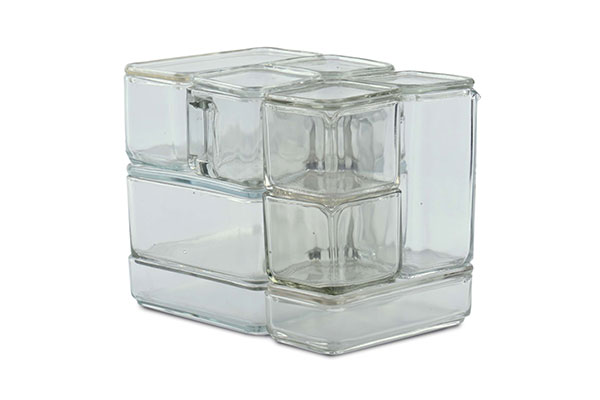
Wilhelm Wagenfeld’s Kubus Glass containers for the Lausitzer Glassworks, 1938
Wagenfeld’s greatest commercial success were the kubus (cubes) glass containers for the Lausitzer Glassworks in 1938 but he was also well known for the Max & Moritz diabolo-shaped salt and pepper shakers for WMF. The WMF Group (“formerly known as Württembergische Metallwarenfabrik”) is a German tableware manufacturer. There is, of course, also the famous Wagenfeld tea service designed with the Czech graphic designer, Ladislav Sutnar in 1932 for the Glassworks of Schott & Gen in Jena.
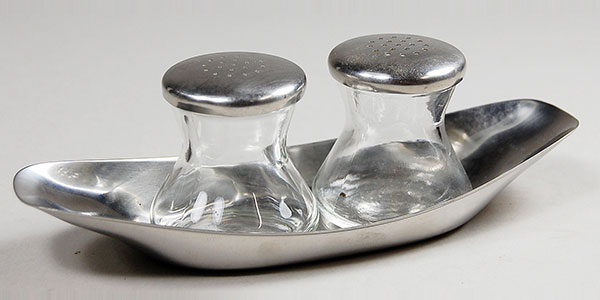
Wilhelm Wagenfeld’s Max & Moritz diabolo-shaped salt and pepper shakers for WMF
The 1930 Exhibition of Contemporary Industrial Art
Wagenfeld was part of the legendary Metropolitan Museum’s Exhibition of Contemporary Industrial Art in 1930 (3th edition) which had a major influence on the development of American design. After this Wagenfeld became a teacher at the government arts college in Berlin in 1931 and remained there until 1935.
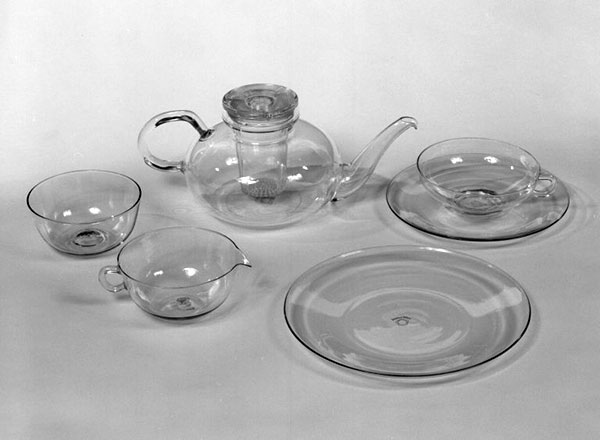
Wagenfeld’s glass tea service designed with the Czech graphic designer, Ladislav Sutnar in 1932 for Schott & Genossen Jenaer Glaswerke. Made 1884-present
The war years, afterwards and the lasting legacy
Unlike many other of the Bauhaus teachers, Wagenfeld stayed on in Germany during the rise of the Nazi regime and the second world war. Because of his reluctancy to serve the Nazi regime Wagenfeld was sent to the Eastern front to fight, whilst there he was captured and unfortunately Wagenfeld finished the war in a Russian prisoner of war camp.
Before starting his own design office in Stuttgart in 1954 he was a professor at the College of fine arts and culture in Berlin. He received the Grand Prix at the Milan Trienale in 1957 and the Bundespreis Gute.
Starting in 1969 and ending in 1982, Wagenfeld directed his design office the Werksta (Workshop) Wagenfeld until 1978 and remained active and interested in the design community until his death in 1990. Bremen has honoured him with his own museum, the Wilhelm Wagenfeld House, and his works are collected by most important museums including the Museum of Modern Art in New York.
However it is the iconic steel WA24, also known as the Bauhaus Lamp, for which Wagenfeld is best remembered.

